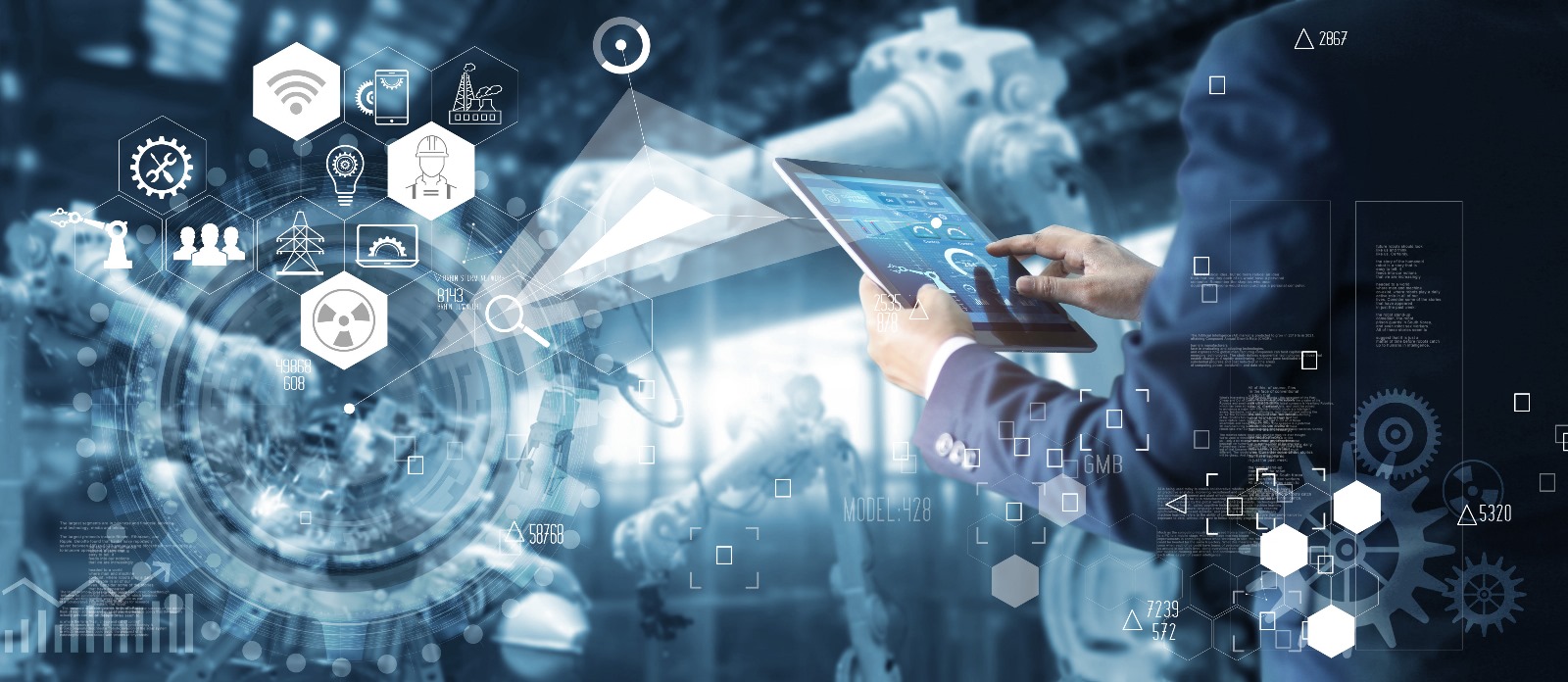In the fast-paced world of military operations, staying ahead of the curve is not just a desire – it’s a necessity. As the nature of warfare evolves and technology continues to advance, ground forces worldwide are embarking on ambitious modernization programs. These initiatives aim to enhance combat capabilities and adapt to the changing landscapes of conflict and security threats. Let’s explore some key aspects of future modernization programs shaping ground forces’ future.
The Vanguard of Progress: Integrating AI and Robotics in Future Ground Operations
In the pursuit of military excellence, innovation often leads to transformation. Ground forces are looking to integrate AI and robotics as a pivotal modernization strategy. These technologies promise to revolutionize decision-making, providing critical insights through data analysis.
Real-World Applications: A Glimpse of the Future-Ground operations leveraging AI technologies, machine learning and data analytics to enhance the capabilities of military forces.
Predictive Analytics: Predictive analytics and natural language processing are critical AI-powered technologies used in the military context to extract valuable insights from unstructured text data. These technologies enable commanders to identify potential threats, anticipate enemy movements, assess the likelihood of ambushes, and optimize resource allocation based on predictive insights.
Natural Language Processing (NLP):is a sphere of artificial intelligence that enables computers to understand, interpret, and generate human language. This is vital in military use for extracting actionable intelligence from vast amounts of unstructured text data, including news articles, social media posts, intercepted communications, and reports. NLP assists in identifying potential threats or understanding the sentiment of local populations.
While NLP is used in the military, adopting this technology depends on the specific military organization, mission objectives, and available resources. NLP is used for:
- Open Source Intelligence (OSINT)
- Communication Interception
- Strategic Analysis
- Social Media Monitoring
- Trend & Threat Analysis
While NLP is valuable in military contexts, its use is not uniform across all military operations or branches. Specific deployments of NLP depend on the military’s priorities, available technology, and the nature of the tasks at hand. As technology advances, it is foreseeable that NLP’s role in military intelligence and analysis will grow, offering even more sophisticated insights from unstructured text data.

Autonomous Ground Vehicles: Integrating sensors, cameras, and LIDAR systems into the AUVs allows for navigating complex terrains and performing tasks such as reconnaissance, surveillance, and resupply operations AI algorithms will enable the vehicle system to interpret the surroundings of the vehicle, detect obstacles, and make navigation decisions without human intervention.
Computer Vision: The utilization of computer vision technology is revolutionizing the way machines interpret visual information from the environment, making it easier for target identification, facial recognition, and object detection during ground operations. During aerial reconnaissance missions, UAVs equipped with cameras can autonomously identify and classify objects of interest on the ground.
Intelligent Sensor Networks: Sensor networks powered by AI can monitor a wide range of environmental factors including temperature, humidity, and vibrations. By doing so, they provide early warning signs of potential threats, such as enemy movement or intrusions. This ability significantly enhances situational awareness during operations enabling faster and more effective responses to any events that may arise. The benefits of these networks are apparent, as they provide a crucial layer of protection in situations where immediate action is necessary.
Decision Support Systems: AI-driven decision support systems collate and analyze data from multiple sources providing commanders with a comprehensive overview of the battlefield. Commanders can leverage this information to evaluate different courses of action, assess risk factors, and recommend optimal strategies.
Human-Machine Teaming: AI technologies that facilitate human-machine collaboration are becoming more prevalent. Wearable devices with AI algorithms can monitor soldiers’ vital signs, fatigue levels, and overall well-being. This information helps commanders make informed decisions about troop deployment and rest schedules.
Automated Target Recognition: AI-based target recognition systems use machine learning to distinguish between friendly and enemy targets. These systems can identify objects of interest in real-time imagery or video feeds, assisting soldiers in making split-second decisions during engagements.
Cognitive Computing: Cognitive computing systems simulate human thought processes using AI algorithms. In ground operations, these systems can analyze complex situations, consider multiple factors, and provide actionable insights to commanders, aiding in strategic planning and decision-making.
Swarm Robotics: Swarm robotics involves coordinating multiple autonomous robots to work together, providing for mapping, surveillance, and search and rescue missions. AI algorithms enable robots to communicate and collaborate effectively without direct human control.
Let’s explore the purpose, benefits, and real-world applications of integrating AI and robotics into ground operations to enhance efficiency, safety, and decision-making. As technology advances, ground forces are likely to explore more innovative applications of AI to address evolving challenges on the modern battlefield.

Purpose: Advancing Mission Success
Integrating AI and robotics into ground operations primarily aims to augment human capabilities and improve the overall effectiveness of military endeavours. AI systems can process vast amounts of data in real-time, providing commanders and soldiers with invaluable insights for informed decision-making. Robotics, on the other hand, can perform tasks that are dangerous, monotonous, or simply beyond human physical limitations, reducing the risk to personnel and increasing operational efficiency.
Benefits: Efficiency and Safety Amplified
Operational Efficiency: AI algorithms can analyze complex data sets faster and more accurately than human operators facilitating quicker identification of threats, prediction of enemy movements, and assessment of terrain conditions. By streamlining information processing, ground forces can make swift, well-informed decisions that can significantly influence the outcome of a mission.
Personnel Safety:
One of the most profound benefits of integrating AI and robotics is the potential to minimize risk to human lives. Tasks once classed as dangerous, such as reconnaissance in hostile territories or handling explosive devices, are now performed by autonomous or remotely operated robots, significantly reducing soldiers’ exposure to life-threatening situations and allowing them to focus on more strategic tasks.
AI-powered targeting systems and autonomous weapons provide unmatched precision and accuracy. These technologies minimize collateral damage, reduce the risk of civilian casualties, and ensure that military actions are proportionate and effective.
Real-World Military Applications
Autonomous Reconnaissance Platforms
Autonomous ground vehicles, drones, and robotic platforms support tasks such as reconnaissance, resupply, and even combat, reducing the risk to human personnel. Ground forces can deploy unmanned ground vehicles equipped with advanced sensors and cameras to gather critical reconnaissance data in real-time. These vehicles enter hazardous areas without risking human lives, providing invaluable insights to the commanders.
Supply Chain Management: AI algorithms can optimize supply routes, predict maintenance needs, and monitor inventory levels, streamlining logistics and ensuring that troops have the necessary equipment and supplies when and where needed.
Search and Rescue: In disaster-stricken areas or hostile environments, robots can navigate treacherous terrain, locate survivors, or assess the situation. This capability can significantly improve the efficiency and success of search and rescue missions.
Force Multiplication: AI-enhanced decision support systems provide commanders with a holistic view of the battlefield, analyzing real-time data from various sources to suggest optimal strategies. The real-time data enables commanders to allocate more effectively and coordinate forces.
Empowering the Future of Ground Operations
The integration of AI and robotics into ground operations heralds a new era of military capability. By harnessing the power of data-driven decision-making and automating tasks that were once dangerous or time-consuming, ground forces can operate with heightened efficiency and safety. As these technologies continue to mature, their impact on modern warfare promises to be transformative, redefining the role of humans in conflict zones and paving the way for safer, more effective military endeavours.

